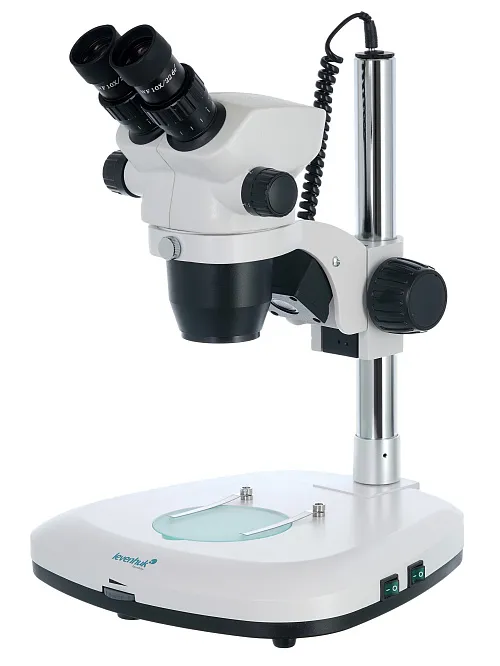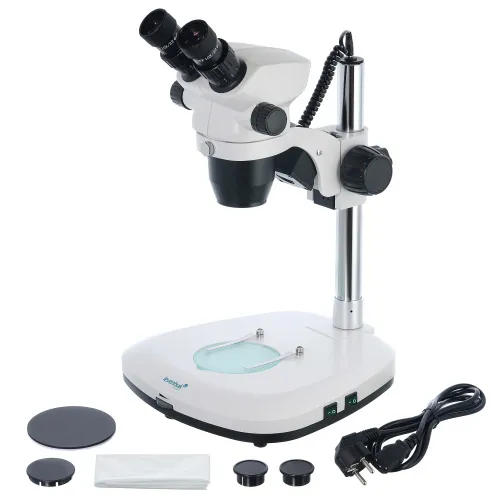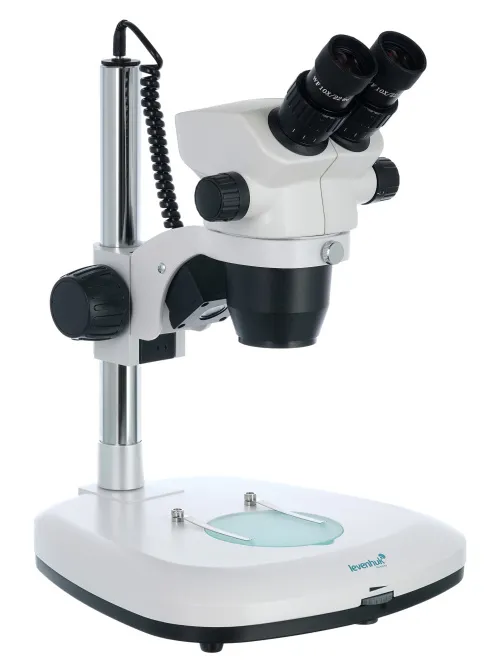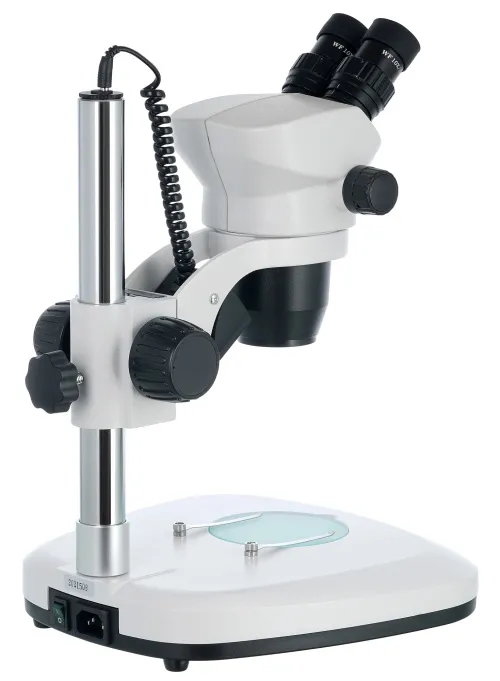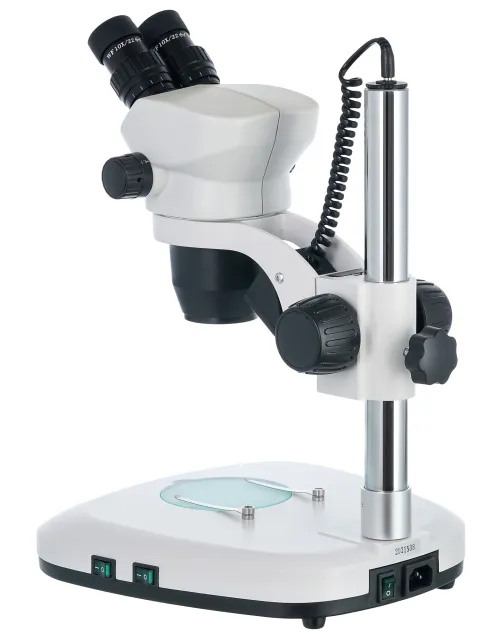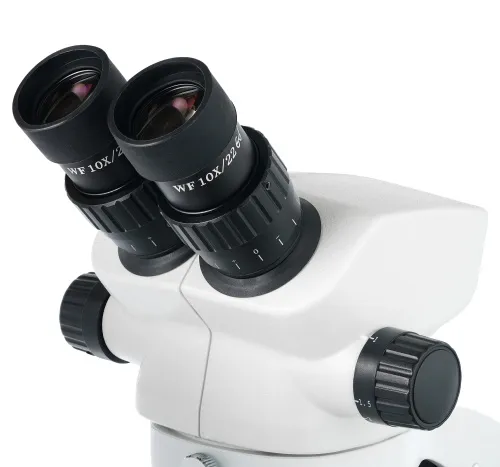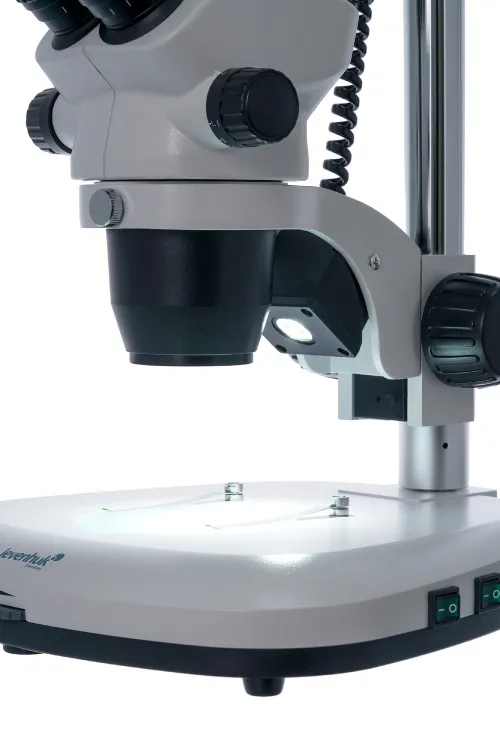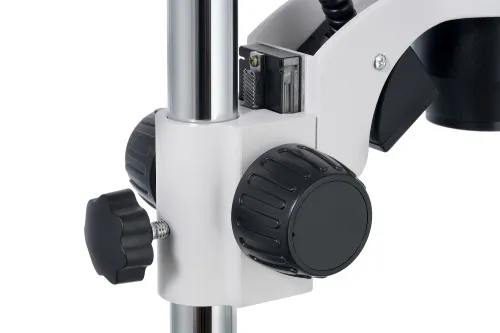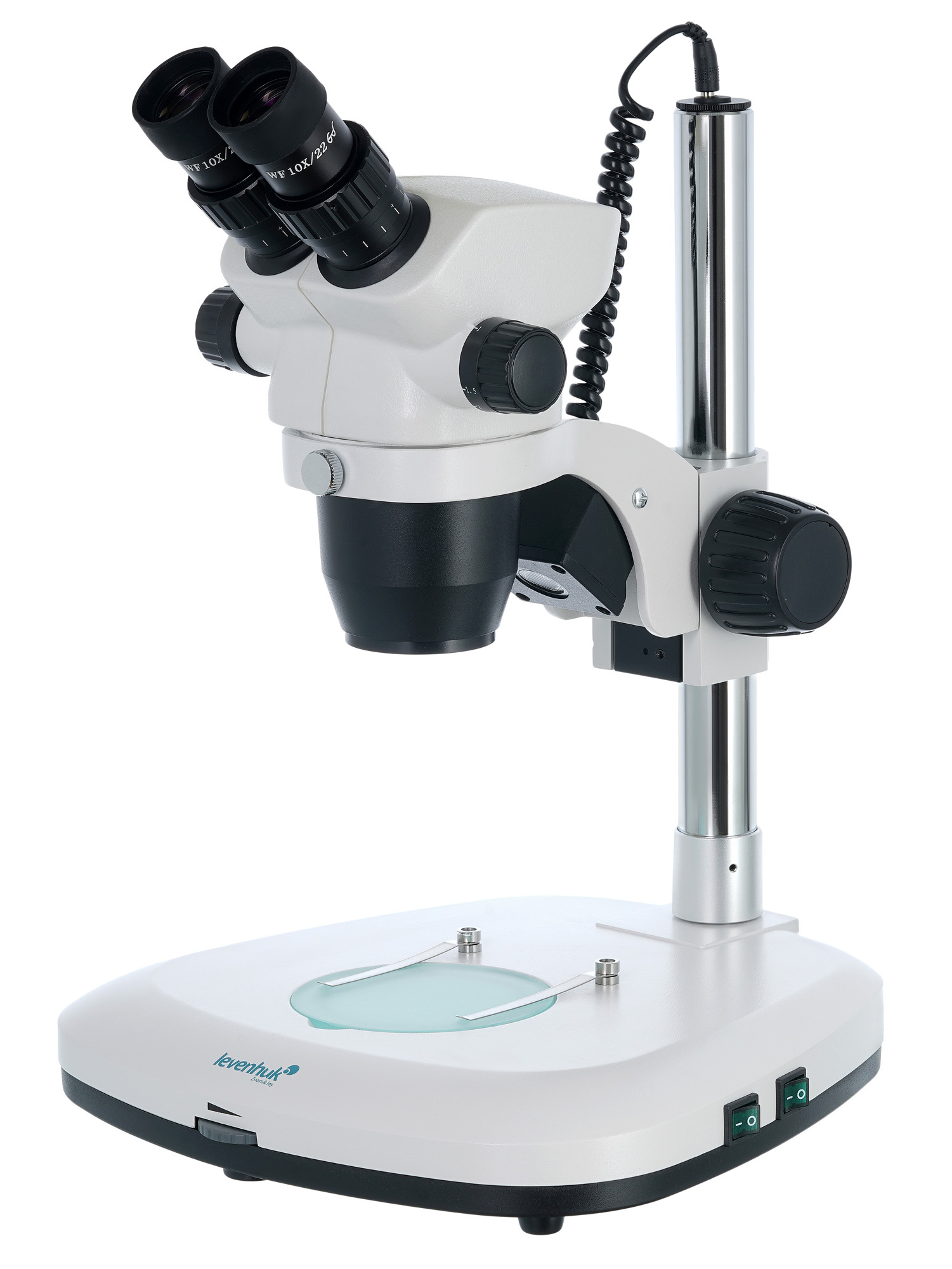Levenhuk ZOOM 1B Binocular Microscope
Magnification: 7–45x. Stereo microscope with a zoom objective and 235mm working distance
| Product ID | 76056 |
| Brand | Levenhuk, Inc., USA |
| Warranty | lifetime |
| EAN | 5905555005379 |
| Package size (LxWxH) | 45x34x37 cm |
| Shipping Weight | 5.62 kg |
Levenhuk ZOOM 1B is an instrumental microscope with a large working distance. It is convenient for studying geological samples, jewelry, biological objects, textiles, circuit boards, and small mechanisms. This microscope can also be used for hobbies and professional activities, e.g. in a service center or watch workshop.
In terms of design, the microscope consists of a base, vertical stand, and optical head. You can conduct observations with both eyes at the same time, the head is slightly angled and can be rotated at 360°. The kit includes two wide-field eyepieces with 10x magnification. The optical scheme is supplemented by a zoom objective, thanks to which you can change the magnification of the microscope not stepwise, but smoothly. An overall magnification range varies from 7 to 45 times. Coarse focusing adjustment is available.
The microscope features two light sources: upper and lower LED lights. This allows for studying samples of any degree of transparency. Brightness adjustment makes it easy to choose an optimal level of illumination so that you can study any of them. The light is powered by an AC power supply.
The microscope body is made of metal, which makes it durable and robust.
Features:
- Stereoscopic (3D) image
- Smooth variable magnification in the range from 7 to 45 times
- Rotatable binocular head inclined at 45°
- Large working distance: 235mm
- Dual LED light with brightness adjustment and an AC power supply
The kit includes:
- Microscope
- Wf10x eyepieces with eyecups (2 pcs)
- Zoom objective: 0.7x–4.5x
- Stage made of matte glass
- Black-and-white double-sided plate
- Power cord with an AC adapter
- Dust cover
- User manual and lifetime warranty
Caution: Please refer to the specifications table for the correct mains voltage and never attempt to plug a 110V device into 220V outlet and vice versa without using a converter. Remember that mains voltage in the U.S. and Canada is 110V and 220–240V in most European countries.
| Product ID | 76056 |
| Brand | Levenhuk, Inc., USA |
| Warranty | lifetime |
| EAN | 5905555005379 |
| Package size (LxWxH) | 45x34x37 cm |
| Shipping Weight | 5.62 kg |
| Type | stereo/instrumental |
| Microscope head type | binocular |
| Optics material | optical glass |
| Head | 360 ° rotatable |
| Head inclination angle | 45 ° |
| Magnification, x | 7 — 45 |
| Eyepiece tube diameter, mm | 30 |
| Eyepieces | WF10x/22mm (2 pcs.) |
| Objectives | 0.7–4.5x (zoom) |
| Working distance, mm | 235 |
| Interpupillary distance, mm | 48 — 75 |
| Stage, mm | Ø95 |
| Stage moving range, mm | fixed |
| Stage features | two plates: black and white double-sided and matte glass, with clips |
| Eyepiece diopter adjustment, diopters | ±5 |
| Focus | coarse (50mm) |
| Body | metal |
| Illumination | LED |
| Brightness adjustment | ✓ |
| Power supply | 220V/50Hz |
| Light source type | upper: 3W LED, lower: 2W LED |
| Operating temperature range, °C | 5...+35 |
| User level | beginners, experienced users |
| Assembly and installation difficulty level | easy |
| Application | for applied research |
| Illumination location | dual |
| Research method | bright field |
| Pouch/case/bag in set | dust cover |
We have gathered answers to the most frequently asked questions to help you sort things out
Find out why studying eyes under a microscope is entertaining; how insects’ and arachnids’ eyes differ and what the best way is to observe such an interesting specimen
Read this review to learn how to observe human hair, what different hair looks like under a microscope and what magnification is required for observations
Learn what a numerical aperture is and how to choose a suitable objective lens for your microscope here
Learn what a spider looks like under microscope, when the best time is to take photos of it, how to study it properly at magnification and more interesting facts about observing insects and arachnids
This review for beginner explorers of the micro world introduces you to the optical, illuminating and mechanical parts of a microscope and their functions
Short article about Paramecium caudatum - a microorganism that is interesting to observe through any microscope

